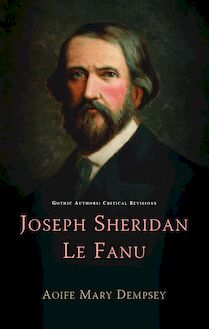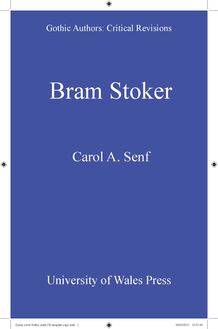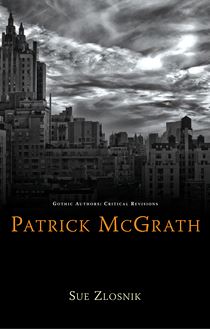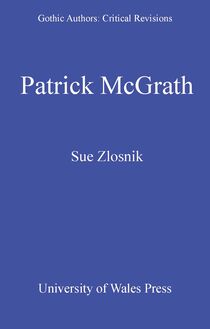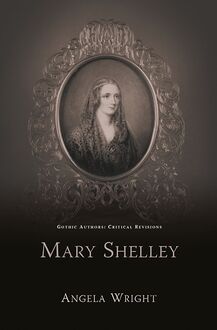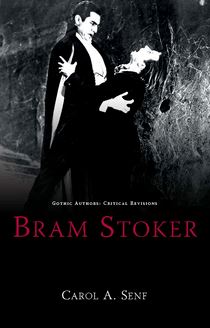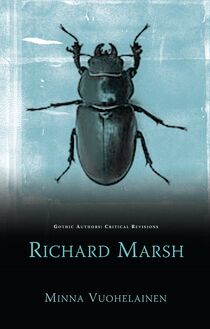-
 Univers
Univers
-
 Ebooks
Ebooks
-
 Livres audio
Livres audio
-
 Presse
Presse
-
 Podcasts
Podcasts
-
 BD
BD
-
 Documents
Documents
-
- Cours
- Révisions
- Ressources pédagogiques
- Sciences de l’éducation
- Manuels scolaires
- Langues
- Travaux de classe
- Annales de BEP
- Etudes supérieures
- Maternelle et primaire
- Fiches de lecture
- Orientation scolaire
- Méthodologie
- Corrigés de devoir
- Annales d’examens et concours
- Annales du bac
- Annales du brevet
- Rapports de stage
La lecture à portée de main
208 pages
English
Découvre YouScribe en t'inscrivant gratuitement
Je m'inscrisDécouvre YouScribe en t'inscrivant gratuitement
Je m'inscris
Obtenez un accès à la bibliothèque pour le consulter en ligne
En savoir plus
En savoir plus
208 pages
English
Obtenez un accès à la bibliothèque pour le consulter en ligne
En savoir plus
En savoir plus

Description
This study of Bram Stoker focuses on Stoker as a Gothic writer. Identified with Dracula, Stoker is largely responsible for taking the Gothic away from medieval castles and placing it at the center of modern life. The study examines Stoker's contribution to the modern notion of Gothic and thus to the history of popular culture and demonstrates that the excess generally associated with the Gothic is Stoker's way of examining the social, economic, and political problems. His relevance today is his depiction of problems that continue to haunt us at the beginning of the twenty first century. What makes the current study unique is that it privileges Stoker's use of the Gothic but also addresses that Stoker wrote seventeen other books plus numerous articles and short stories. Since a number of these works are decidedly not Gothic, the study puts his Gothic novels and short stories into the perspective of everything that he wrote. The creator of Dracula also wrote The Duties of Clerks of Petty Sessions in Ireland, a standard reference work for clerks in the Irish civil service, as well as The Man and Lady Athlyne, two delightful romances. Furthermore, Stoker was fascinated with technological development and racial and gender development at the end of the century as well as in supernatural mystery. Indeed the study demonstrates that the tension between the things that can be explained rationally and the things that cannot is important to our understanding of Stoker as a Gothic writer.
Introduction: Tracing the Gothic through Stoker's Short Stories Chapter 1: Gothic Material in The Snake's Pass, The Watter's Mou and The Shoulder of Shasta Chapter 2: Dracula: Stoker's Gothic Masterpiece Chapter 3: Ongoing Work with the Gothic in Miss Betty, The Mystery of the Sea and The Jewel of Seven Stars Chapter 4: Gothic-Tinged Romances: The Man, Lady Athlyne and The Lady of the Shroud Chapter 5: Stoker's Return to the Gothic in Famous Impostors and The Lair of the White Worm
Introduction: Tracing the Gothic through Stoker's Short Stories Chapter 1: Gothic Material in The Snake's Pass, The Watter's Mou and The Shoulder of Shasta Chapter 2: Dracula: Stoker's Gothic Masterpiece Chapter 3: Ongoing Work with the Gothic in Miss Betty, The Mystery of the Sea and The Jewel of Seven Stars Chapter 4: Gothic-Tinged Romances: The Man, Lady Athlyne and The Lady of the Shroud Chapter 5: Stoker's Return to the Gothic in Famous Impostors and The Lair of the White Worm
Sujets
Informations
| Publié par | University of Wales Press |
| Date de parution | 01 novembre 2010 |
| Nombre de lectures | 0 |
| EAN13 | 9780708323076 |
| Langue | English |
| Poids de l'ouvrage | 1 Mo |
Informations légales : prix de location à la page 0,0400€. Cette information est donnée uniquement à titre indicatif conformément à la législation en vigueur.
Extrait
Gothic Authors: Critical Revisions
Bram Stoker
Carol A. Senf
University of Wales Press
BRAM STOKER
SERIESPREFACE
Gothic Authors: Critical Revisions is dedicated to publishing innovative introductory guides to writers of the Gothic.The series explores how new critical approaches and perspectives can help us to recontextualize an author’s work in a way that is both accessible and informative. The series publishes work that is of interest to students of all levels and teachers of the literary Gothic and cultural history.
SERIESEDITORS
Andrew Smith, University of Glamorgan Benjamin Fisher, University of Mississippi
EDITORIALBOARD
Kent Ljungquist,Worcester Polytechnic Institute, Massachusetts Richard Fusco, St Joseph’s University, Philadelphia David Punter, University of Bristol Angela Wright, University of Sheffield Jerrold E. Hogle, University of Arizona
GOTHIC AUTHORS: CRITICAL REVISIONS
Bram Stoker
Carol A. Senf
UNIVERSITY OF WALES PRESS C A R D I F F 2 0 1 0
© Carol A. Senf, 2010
All rights reserved. No part of this book may be reproduced in any material form (including photocopying or storing it in any medium by electronic means and whether or not transiently or incidentally to some other use of this publication) without the written permission of the copy-right owner except in accordance with the provisions of the Copyright, Designs and Patents Act 1988. Applications for the copyright owner’s written permission to reproduce any part of this publication should be addressed to the University of Wales Press, 10 Columbus Walk, Brigantine Place, Cardiff, CF10 4UP.
www.uwp.co.uk
British Library CIP Data A catalogue record for this book is available from the British Library.
ISBN 978-0-7083-2385-4 (hardback) ISBN 978-0-7083-2306-9 (paperback) e-ISBN 978-0-7083-2307-6
The right of Carol A. Senf to be identified as author of this work has been asserted by her in accordance with sections 77 and 79 of the Copyright, Designs and Patents Act 1988.
Printed by CPI Antony Rowe, Chippenham,Wiltshire
To Marlie Ann Senf (31 October 1916), my mother, and Andrew Joseph Senf (7 December 2008), my nephew, the oldest and youngest members of my family
ACKNOWLEDGEMENTS
Although it has become something of a cliché to say that it ‘takes a village to raise a child’, the same thing is true of producing a book. Without the help and support of numerous people around the world, this book on Stoker would never have been born, let alone come to maturity. One of the most important people is Professor Andrew Smith at the University of Glamorgan, and one of the editors of the series, Gothic Literary Studies, as well as a scholar whose work on the Gothic and on Stoker I have admired for a number of years.When Smith invited me to contribute a book on Bram Stoker and the Gothic to the series, Gothic Authors: Critical Revisions, I literally leapt at the opportunity. It was, in the words of Don Corleone,‘an offer I couldn’t refuse’.After studying Stoker off and on for almost forty years, I was delighted to have an opportunity to pull together many of my thoughts on Stoker, in particular my ideas regarding his exploration of multiple genres. While Smith provided the initial idea, the book would never have come together without the help of numerous colleagues and students at the Georgia Institute of Technology, with whom I have shared the occasional Stoker moment.Among the most important of those colleagues are Ken Knoespel, chair of my home unit, the School of Literature, Communication and Culture, and Jay Telotte, director of Undergraduate Studies, who allowed me a semester away from teaching to put the finishing touches on this book. Nor could I have pulled this book together without the help of the Georgia Tech Library who cheerfully located books that I needed. Another supportive group is the members of the Canadian chapter of the Transylvanian Society of Dracula (TSD) who continue to remind me thatDraculaIn 2007 when I attendedand Stoker matter. the TSD Symposium and Dracula Tour through Romania, I had the opportunity to meet people from all over the world who care about
Acknowledgements
Dracula and Stoker’s other works.Among the most significant were Leslie Klinger, who was then preparing his annotated edition ofDracula, and the always inspiring Elizabeth Miller, author of a number of schol-arly works on Dracula. Even though Stoker never went toTransylvania, the symposium and tour allowed me to meet people from all walks of life who care aboutDracula. Last but not least I must thank my family who have all learned to tolerate if not appreciate my interest in Stoker. My husband, Jay Farlow, even accompanied me on my 2007 trek to Transylvania.And my children, Jeremy and Andy, now all grown up, have learned not to roll their eyes and grimace whenever Stoker’s name comes up.
Carol A. Senf Atlanta
viii
-
 Univers
Univers
-
 Ebooks
Ebooks
-
 Livres audio
Livres audio
-
 Presse
Presse
-
 Podcasts
Podcasts
-
 BD
BD
-
 Documents
Documents
-
Jeunesse
-
Littérature
-
Ressources professionnelles
-
Santé et bien-être
-
Savoirs
-
Education
-
Loisirs et hobbies
-
Art, musique et cinéma
-
Actualité et débat de société
-
Jeunesse
-
Littérature
-
Ressources professionnelles
-
Santé et bien-être
-
Savoirs
-
Education
-
Loisirs et hobbies
-
Art, musique et cinéma
-
Actualité et débat de société
-
Actualités
-
Lifestyle
-
Presse jeunesse
-
Presse professionnelle
-
Pratique
-
Presse sportive
-
Presse internationale
-
Culture & Médias
-
Action et Aventures
-
Science-fiction et Fantasy
-
Société
-
Jeunesse
-
Littérature
-
Ressources professionnelles
-
Santé et bien-être
-
Savoirs
-
Education
-
Loisirs et hobbies
-
Art, musique et cinéma
-
Actualité et débat de société
- Cours
- Révisions
- Ressources pédagogiques
- Sciences de l’éducation
- Manuels scolaires
- Langues
- Travaux de classe
- Annales de BEP
- Etudes supérieures
- Maternelle et primaire
- Fiches de lecture
- Orientation scolaire
- Méthodologie
- Corrigés de devoir
- Annales d’examens et concours
- Annales du bac
- Annales du brevet
- Rapports de stage
Signaler un problème
YouScribe
Le catalogue
Le service
© 2010-2024 YouScribe
